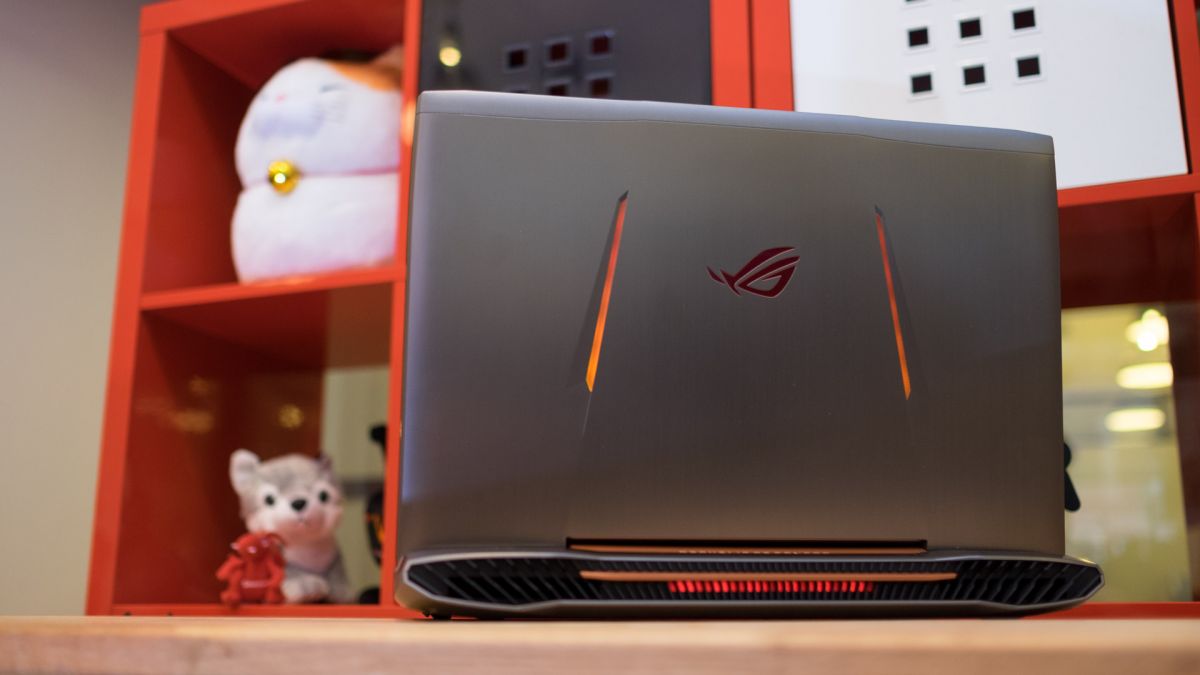
Introduction and design
Once all but a misnomer, today there are more gaming notebooks to choose from than ever. While the trend lately has favored more more svelte and understated gaming laptops, machines packing a big screen and big performance haven’t gone anywhere.
Asus’s enthusiast gamer hardware and accessory line, Republic of Gamers (ROG), includes a range of ROG PCs and laptops packing the latest performance hardware into distinct chassis and frames that are aimed to stand out.
Following last year’s highly-praised Asus ROG G751, the Asus ROG G752 is another portable PC gaming beast that features a distinctive design and plenty of oomph to run even the most demanding of PC games at the highest settings.
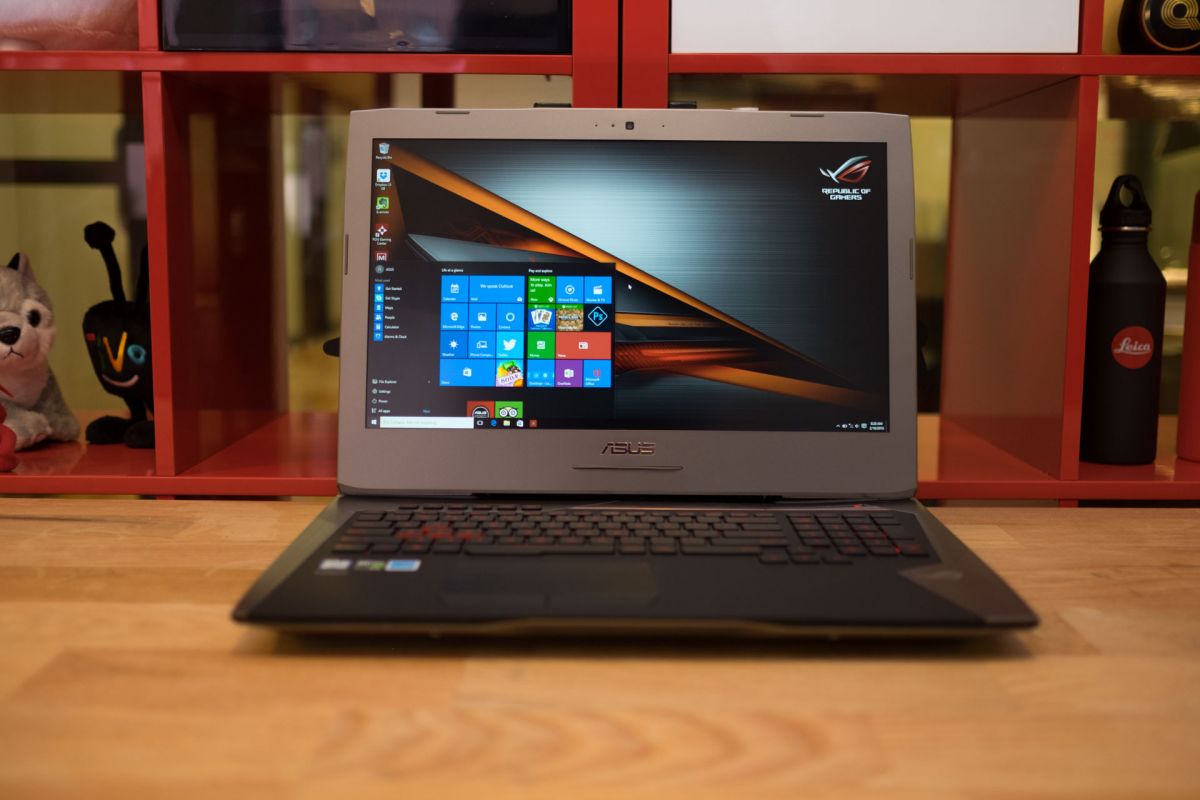
Although this 17.3-inch monster is available in a variety of high-end configurations, the model sent to techradar for review (a G752VT, specifically) features an Intel Skylake, 2.6GHz quad-core i7 processor, 16GB of DDR4 RAM, a 128GB solid-state drive (SSD) alongside 1TB of hard disk storage, and a super-fast GeForce GTX 970M graphics card with 3GB of video memory.
With beefy specifications and Asus’s renowned build quality in tow, there’s a lot to like about this massive machine, coupled with a few surprises along the way.
Design
While it was an early adopter of matte black plastic, Asus has more recently been swamped by gaming laptops with a very similar aesthetic. With the ROG G752, the company has clearly decided to change tact and head in a direction of its own that is dominated by silver and bronze – a color combination that’s rather distinct, and effortlessly alludes to the power concealed within.

Much of the outside is covered in brushed aluminium that makes the G752 feel well-made and a little classier than if it was simply silver-sprayed plastic. Angular lines and masculine glowing red segments on the lid make the G752 stand-out from more sedate gaming notebooks, such as the superb 2015 Razer Blade.
The rear fan grille looks like something you’d be more likely to find on a prototype super car at the Geneva Motor Show than a mass-produced gaming laptop. There are even some cool red LEDs nestled inside the grille that make it look like a red-hot exhaust.
Lift the lid, and you’re met with a markedly less impressive interior, which retains portions of the angular design and bronze accents, but mixes them with black matte plastic in a rather jumbled fashion. Personally we would have preferred to see the clean angular lines carried on inside, rather than the assortment of angles that looks a little over-the-top.
Although there is, of course, a large number of components to cram into the G752 notebook, we cannot help but think that the bezels that surround the 17.3-inch screen are a little unforgivable when compared to the smaller Aorus X3 Plus v3 or even last year’s Asus ROG G751.
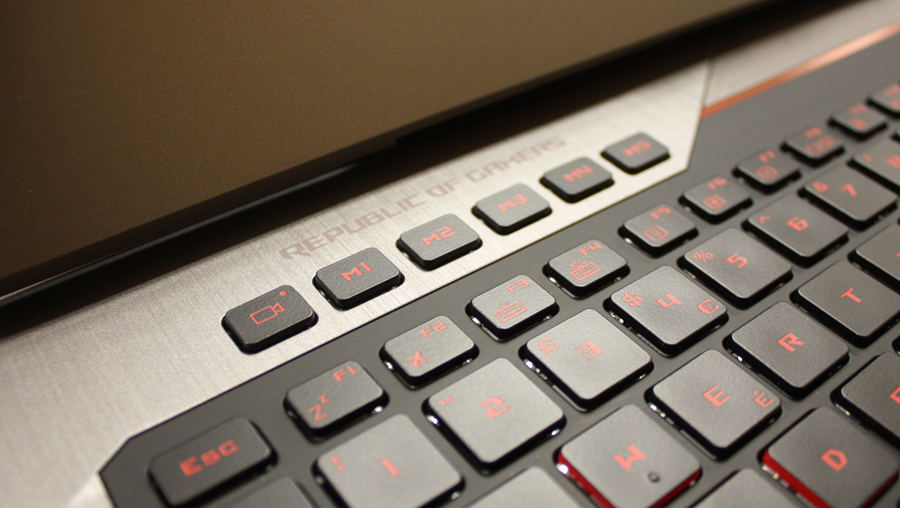
The excellent, chiclet-style keyboard is well-spaced and responsive, and features Asus’s anti-ghosting keyboard technology. A dedicated recording key and five programmable macro keys are located above the keyboard, which can be setup to provide speedy access to preset functions in-game – a very handy addition for dedicated gamers.
Red backlighting is no change from last year’s model, and so feels a little out of place next to the silver and bronze shell. But – if nothing else – it’s less distracting than some of the blinding blue backlights other manufacturers insist upon.
The trackpad is smooth, large and equally responsive, and – while it won’t replace a precision mouse for many gamers – it’s a good substitute for slower-paced RTS gaming and general use.
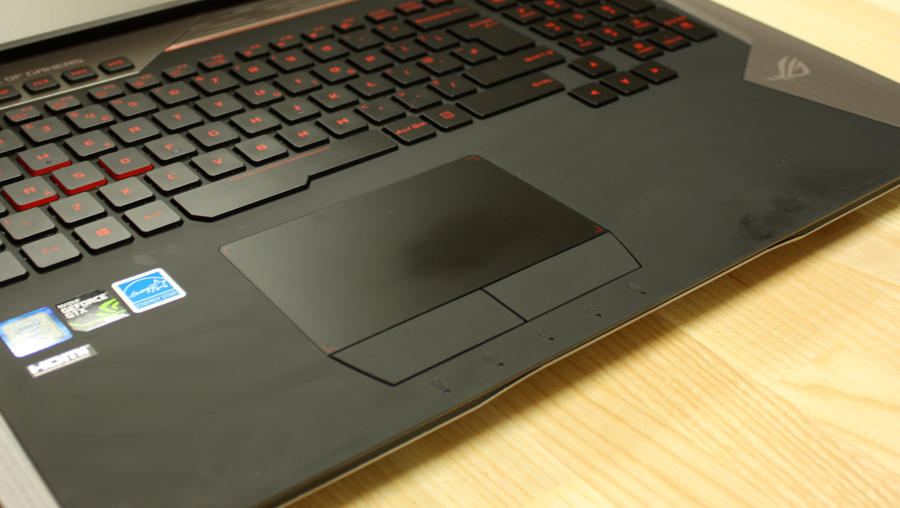
Whether you are looking to play on a bigger screen or plug in a plethora of peripherals, the G752 has a full brace of ports.
Both mini DisplayPort and HDMI are here, plus four USB 3.0 ports, RJ-45 LAN, audio in/out and a combo audio jack with SPDIF. There’s also a USB 3.1 Type-C port that allows for super-fast data transfers to compatible hard drives, smartphones and no doubt much more once this input/output standard becomes more widely adopted.
Specifications
And now for – quite literally – the elephant in the room: this particular gaming laptop weighs in at an incredibly hefty 4.4kg (or 9.7 pounds), and has a mammoth footprint, measuring 42.8 x 33.3 x 5.1cm (W x D x H).
It shouldn’t be that surprising that this laptop weighs quite so much. Asus is pushing the boundaries of portability, and this unit seems fully intended for mainly desktop use – rather than your lap. Plus, Asus likely needed that room to achieve the level of performance on display here.

The most notable upgrade to the Asus ROG G752 is Intel’s latest Skylake processors, leaving the Haswell generation behind. There are only two options, but the chips are both high-performance choices: the 2.6GHz Intel Core i7-6700HQ and 2.7GHz Intel Core i7-6820HK.
On the graphics end, this 17-inch gaming laptop can be configured with Nvidia GTX 965M, 970M or 980M graphics chips. If you so choose, you can bump up the specs even further, with up to 64GB of RAM and 512GB of SSD space or a 1TB hard drive.

Spec sheet
For the purpose of this review, techradar was provided with a mid-range review unit as follows:
- CPU: 2.6GHz Intel Core i7-6700HQ (quad-core, up to 3.5GHz with Turbo Boost)
- GPU: Nvidia GeForce GTX 970M (3GB GDDR5); Intel HD Graphics 530
- RAM: 16GB DDR4
- Screen: 17.3-inch, full HD 1,920 x 1,080, IPS LCD
- Storage: 128GB SSD; 1TB HDD (7,200rpm)
- Optical Drive: 6x Blu-ray/DVD combo drive
- Ports: 4 x USB 3.0, 1 x USB 3.1 Type-C, HDMI, mini DisplayPort, 1 x RJ-45 LAN, 1 x SD card reader, 1 x mic in, 1 x audio out, 1 x combo audio jack with SPDIF
- Connectivity: 802.11ac Wi-Fi, Bluetooth 4.0
- Camera: HD webcam
- Audio: Stereo speakers; built-in sub-woofer
- Battery: 8-cell; 6,000mAh (88Whrs)
- Weight: 4.4kg (9.7 pounds)
- Dimensions: 463 x 333 x 23 41mm (W x D x H)
Aside from the new silicon, the Asus ROG G752 features a vapor chamber cooling system rather than traditional heat pipes. This system introduces a larger chamber that acts as a reservoir for cooling the liquid that passes through the heat pipes. In short, the technology is more efficient at dispersing heat than the systems commonly found inside most gaming laptops.
Thus far, only Nvidia Titan cards and other high-end GPUs have had vapor chambers because the chambers are expensive to produce. As Intel’s new Skylake processors are always overclocked to some extent, this should help the G752 run more efficiently and at higher performance levels for longer without cooking.
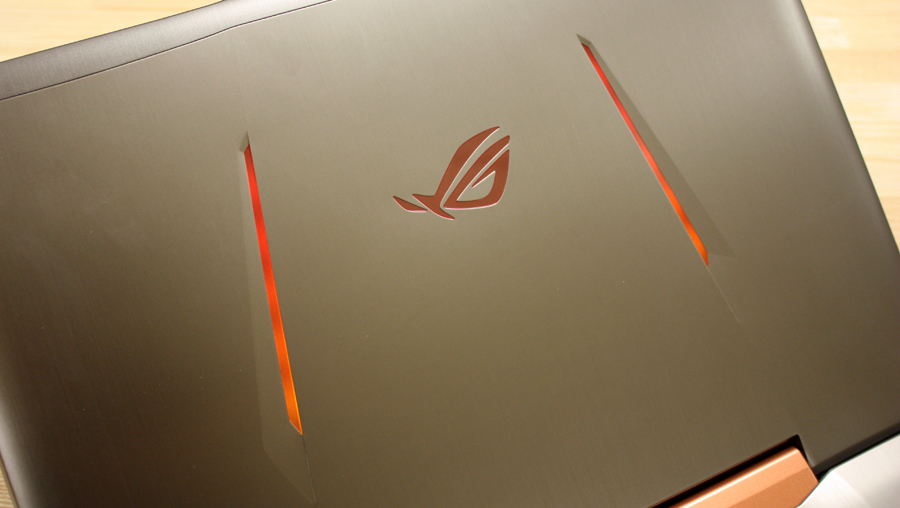
Equally impressive was how noticeably quiet the cooling system is. Even when playing games or running intensive benchmarks, the fans did not drown out the speakers or cause annoying vibrations.
While the larger chassis might not be to everyone’s taste, it’s difficult to fault the G752, as it combines plenty of power, solid build quality and dashing looks into an package that is cheaper than similarly-specified rivals, such as the latest Alienware 17.

For alternatives, consider the Origin EVO15-S or the MSI G60 Ghost Pro. The EVO15-S is available for $2,294 (about £1,614, AU$3,278) and has a more compact 15-inch chassis that features some even more beefy specifications, including a 970M with 6GB of DDR5 video memory. On the other hand, the 15.6-inch G60 Ghost Pro is an almost identical machine on most other fronts, but is both slimmer and lighter.
Performance and multimedia
The ASUS ROG G752 does not hold back on power. The configuration we were provided has more than enough punch for driving even the most demanding games at full 1080p resolution.
The Nvidia GeForce GTX 970M is based upon one of the most popular desktop GPUs of the current generation, and – with 3GB of video memory available – chews through high resolution textures, effects and other graphical bells and whistles without breaking a sweat.
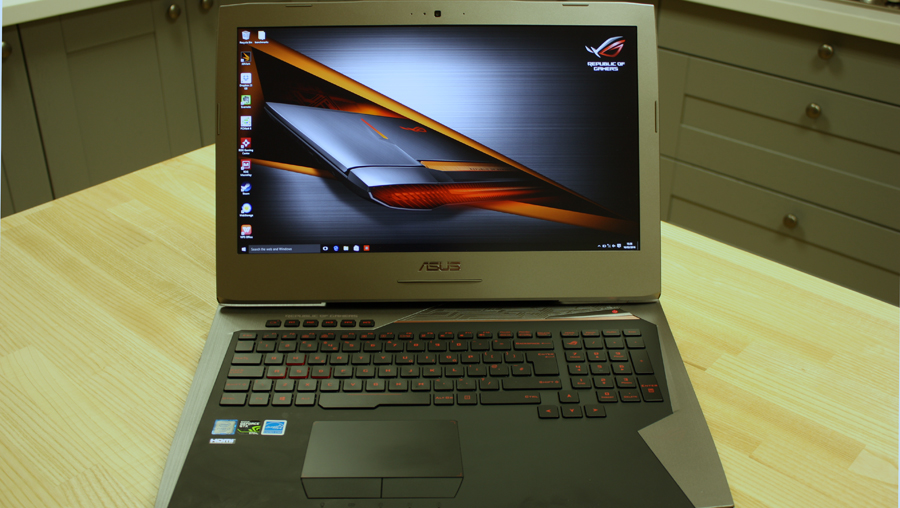
When I first started benchmarking the G752, I was a little confused by the lower than expected results – before I realized that the laptop includes Nvidia’s G-Sync technology. This new tech is usually reserved for desktop monitors, but essentially allows the screen and graphics card to synchronize each frame in order to totally eradicate tearing and other graphical glitches.
After turning G-Sync off, I saw frame rates of games and benchmarks rise further, even without any noticeable graphical degradation.
In my time with the G752, I found that every fast-paced game – from Rocket League to Grand Theft Auto V – played at ultra or very high settings while maintaining a steady 60 frames per second (fps). Slower titles, such as The Vanishing of Ethan Carter, could be cranked up to the highest settings and looked absolutely beautiful on the 1080p IPS screen.

Benchmarks
Here’s how the Asus G752VT performed in our series of benchmarks:
- 3DMark: Cloudgate: 20,263; Sky Diver: 19,093; Fire Strike: 6,596
- Cinebench: CPU: 672; Single Core CPU: 142; Graphics: 74 fps
- PCMark 8 Home Test: 4,807
- PCMark 8 Battery Life: 1 hour and 49 minutes
- Middle Earth: Shadow of Mordor: (1080p, Ultra): 54 fps; (1080p, low): 122 fps
- Metro: Last Light: (1080p, Ultra): 30 fps; (1080p, Low): 99 fps
Thanks to the combination of a brand new Skylake i7 processor, Maxwell GPU and speedy SSD, the G752 steamed through our series of benchmarks without so much as a stutter. 3DMark’s more strenuous Fire Strike test clocked up a mighty score of 6,596, an appreciable jump of more than 700 points over the score achieved by last year’s Asus ROG G751.
Overall, the 3DMark results were on par with the MSI GS60 Ghost Pro, which is an almost identical machine on most fronts. Interestingly, the G752VT actually managed to score higher on both the Cinebench and PCMark 8 Home Test benchmarks. Managing to run Metro: Last Light at a stable 30 fps is incredibly impressive for a single GPU machine, while it managed to blast past the frame rates achieved by the Gigabyte P55K v4 on Middle Earth: Shadow of Mordor.
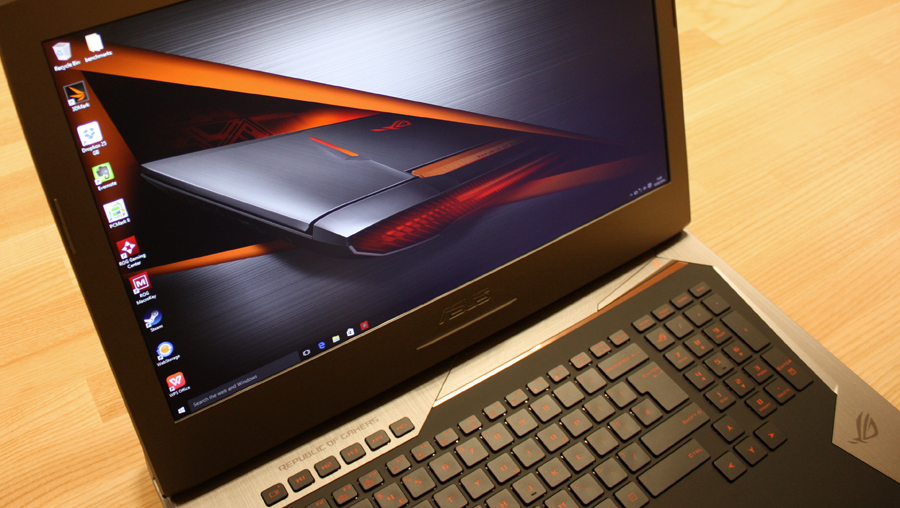
Battery life
As you might expect from a gaming laptop packing near desktop-level components, battery life isn’t the strongest of the ROG G752’s assets. Asus suggests an estimate of 4 hours of life with regular usage, but in my tests it rarely broke past 2 hours when gaming and running other intensive tasks.
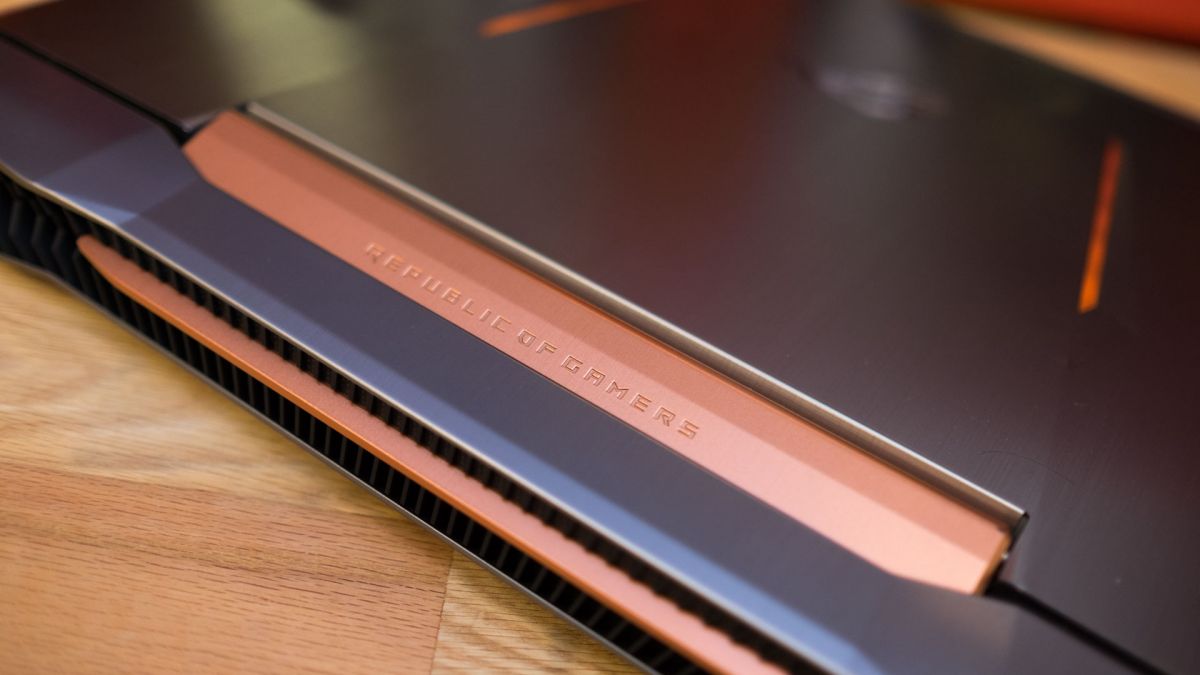
When playing a 1080p Blu-ray with the screen at around 50% brightness, the G752 only just managed to get to the end of the film with a few minutes of battery life remaining. When word processing, web browsing or watching YouTube videos, I manage to get closer to 2 hours 30 minutes.
Still, a rather lackluster performance, despite the 6,000mAh, 8-cell battery.
Clearly, Asus intends for the G752 to spend most of its life tethered to a power socket – especially when gaming. Rather than a go-anywhere portable gaming powerhouse, I suggest you think of it more as a compact desktop PC with plenty of grunt that can be moved around with relative ease.
Multimedia
Unlike the 4K panel found in the smaller Asus ROG G501 (which has a 15.6-inch screen), Asus has stuck with a tried-and-tested, 1080p IPS panel in the G752. This can hardly be called a disappointment, but it’s not the gob-smacking display you might expect from such a powerful machine.
The IPS screen is mostly accurate, displaying deep blacks and a wide range of contrast that makes games look vibrant. A matte finish on the screen may not make the colors pop as much as some more glossy alternatives, but it does drastically reduce reflections and makes gaming possible in almost any lighting condition. Refresh rates up to 75Hz and Nvidia G-Sync compatibility make it an ideal screen for gaming on the go.

Given the laptop’s size, it’s no real surprise that the included audio system is a fairly impressive setup. Stereo speakers nestling either side of the screen’s hinge are capable of delivering convincing surround sound, whilst the sub-woofer on the bottom of the G752 gave plenty of thump to in-game bullet impacts and growling engines.
Asus Sonic Studio II gives you full equalizer control with a number of presets and has adjustments for bass, reverb and voice clarity, too. For game streamers out there, there are also some handy options to enhance your voice-overs when casting your games via Twitch or YouTube.
Bundled software
Although there isn’t a massive selection of pre-installed software on the Asus ROG G752, non-gaming apps are included, like McAfee Internet Security, a trial of Microsoft Office 365 and an alternative in the form of the free-to-use WPS Office.
Gamers will be more excited to find that XSplit GameCaster comes pre-installed with an unlimited license. This app allows for simple recording and streaming to all the most popular services, along with options for webcam overlays and much more. Plus, it can be easily accessed by a dedicated button located alongside the 5 macro keys on the top left of the keyboard.
Verdict
If you’re looking for an all-out gaming laptop to replace an aging desktop PC, you could do little better than the Asus ROG G752. With top-end specs, impressive build quality and stand-out looks on offer, there are few alternatives that offer quite so much power for around £1,200 (around $1,700, AU$2,500). While there are slimmer and slightly more powerful alternatives available if money is no object, the G752 offers an awful lot for the money.
For alternatives, consider the Origin EVO15-S or the MSI G60 Ghost Pro. The EVO15-S is available for $2,294 (about £1,614, AU$3,278) and has a more compact 15-inch chassis that features some even more beefy specifications, including a 970M with 6GB of DDR5 video memory. On the other hand, the 15.6-inch G60 Ghost Pro is an almost identical machine on most other fronts, but is both slimmer and lighter.
We liked
The G752 combines the power of a brand-new Skylake Intel Core i7 processor with Nvidia’s high-powered GTX 970M graphics chip to offer oodles of power on tap for even the most demanding gamer.
Plus, a distinguished design with angular aluminium lines and bronze accents make the latest Asus ROG laptop stand out from so many of the black matte alternatives out there. That is, at the next tournament you attend, not the coffee shop.
Finally, decent sound, a capable IPS display with Nvidia’s G-Sync technology and a Blu-ray drive make this machine a multimedia powerhouse.
We disliked
While I appreciate that the design of this laptop is just what most gamers are looking for, there’s no doubt it has a rather masculine appeal. The internal design isn’t quite as clean as the outside, either.
Also, if you’re looking for a gaming PC to take round a friend’s house every weekend, you’ll need some pretty meaty biceps to haul the G752 around – it’s an incredibly heavy machine.
And lastly, the battery life was – at best – poor. There’s a lot of power under the hood, but it’s not asking much to get more than two hours of battery life before scrambling for a power socket.
Final verdict
Asus has become a brand of choice for many gamers, and deservedly so. The ROG G752 is a truly fantastic laptop in many regards: it’s got more than enough power to run even the latest titles at the highest settings, it runs cool and quiet and it has a plethora of connections and multimedia features to ably replace your desktop.
OK, so it’s an incredibly weighty beast, and I might have wished for a 4K screen, but these compromises are of less concern when you appreciate just how much power you’re getting here for the money.
Source: techradar.com










































